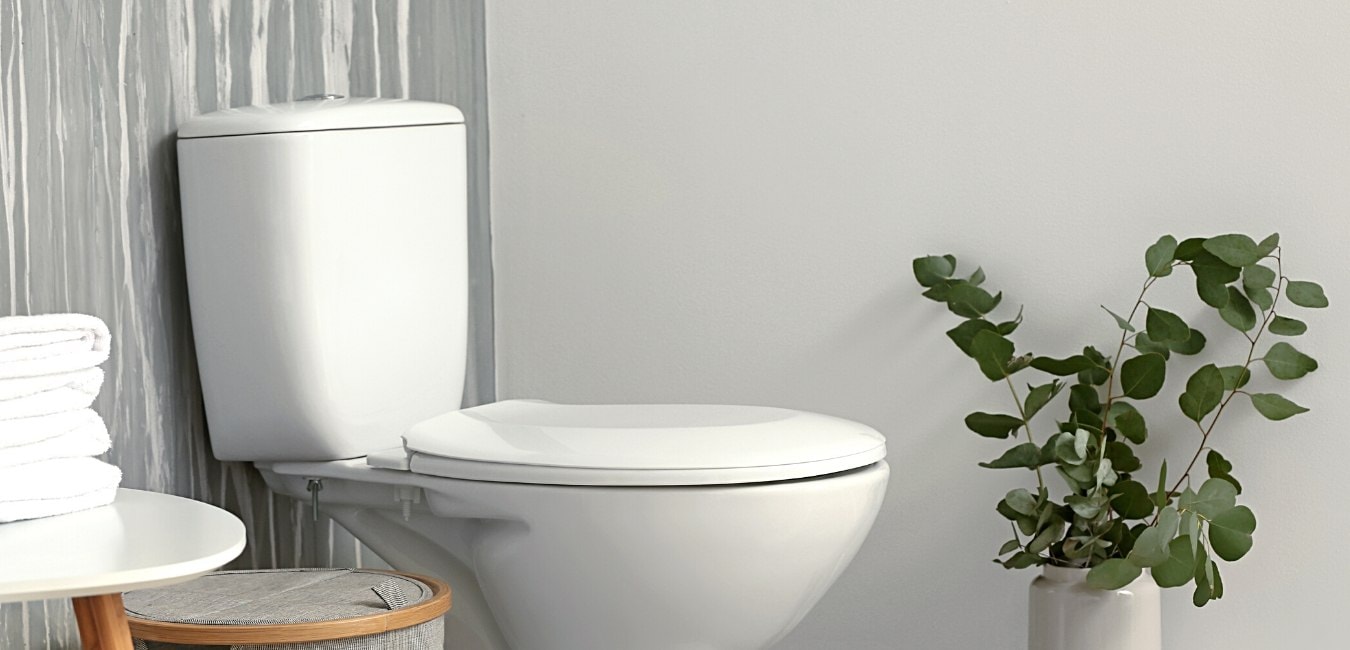Take a peek inside your toilet tank. Is it filled with limescale or rust? Chances are, your toilet’s water tank is filthy compared to the rest of the fixture.
This often-overlooked component helps keep the mechanics of your commode out of site. Unfortunately, the enclosed design makes it a magnet for limescale and hard water stains.
The mess accumulates in the tank, leading to foul odors, extreme discoloration, and more. If not taken care of, a filthy tank can even cause flushing issues.
So that begs the question: “Can CLR be used in toilet tank components?”
In This Article We'll Discuss
Can CLR Be Used in Toilet Tank?

CLR is an effective product for cleaning the toilet tank. Apply CLR to the sides and bottom of the toilet tank. Spray CLR directly onto rust stains and mineral deposits. Scrub stubborn stains with a brush or sponge. Let the CLR solution soak for about 2 minutes before rinsing and flushing.
Why Do Toilet Tanks Get So Dirty?
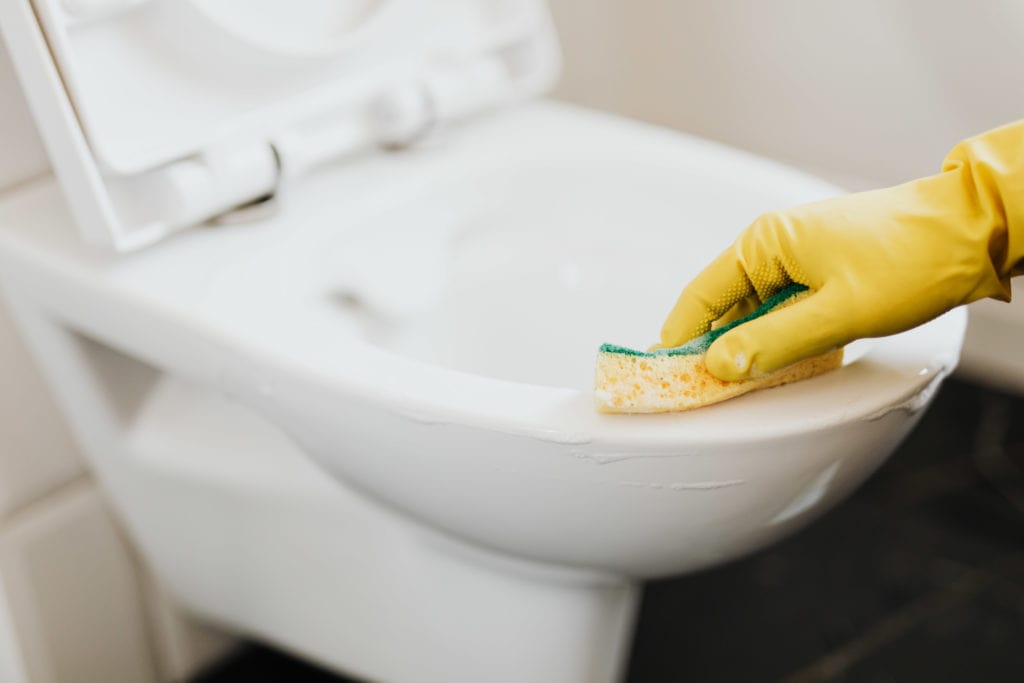
Your toilet tank isn’t just a place to set things! It’s one of the most important parts of your commode. This component houses all the flushing mechanics and prepares water for your flush.
Most homeowners ignore the tank. But, plumbers recommend that you clean the tank out at least twice a year. It might seem pointless, but keeping your tank in good condition can prolong the life of your toilet!
You see, tanks interact with water more than the bowl itself. Every single time you flush, water from the tank rushes through the jets around the rim of the bowl to drive waste away. But what happens after the flush? Well, the tank automatically fills up again!
Beyond those few seconds of flushing, the tank is constantly filled. Ever wonder why the tank is always dirty and smelly? Water is to blame! The constant exposure to water leads to some unsightly issues.
Mineral Buildup
The most pressing issue you’ll have to deal with in the tank is calcium and lime buildup. Over time, the tank will develop a thick chalky substance. You’ve probably seen it before on your sink faucet or showerhead.
Calcium buildup is the result of dissolved minerals in your water hardening. A vast majority of American households have hard water, so it’s a common problem that many have to deal with.
The issue with limescale is that it quickly affects the performance of your toilet! It can clog up jet holes. Not only that, but the limescale can develop on the many flushing components, rendering them useless.
Mold and Algae Growth
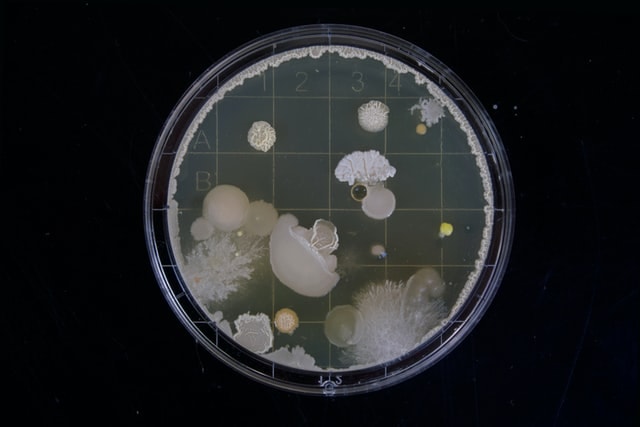
I bet mold is something you didn’t think you’d have to deal with in your bathroom! Mold can form in your toilet tank. This results in a noticeable smell while also creating a light brown or green tinge to the water.
The truth is that the toilet tank is the perfect breeding ground for mold and bacteria. It’s constantly moist in that enclosed environment. Not only that, but the toilet provides mold with a reliable food source. If you have hard water, mold can thrive!
Of course, having mold in your toilet tank is not good. It can degrade your commode and lead to a host of potential health problems.
Rust
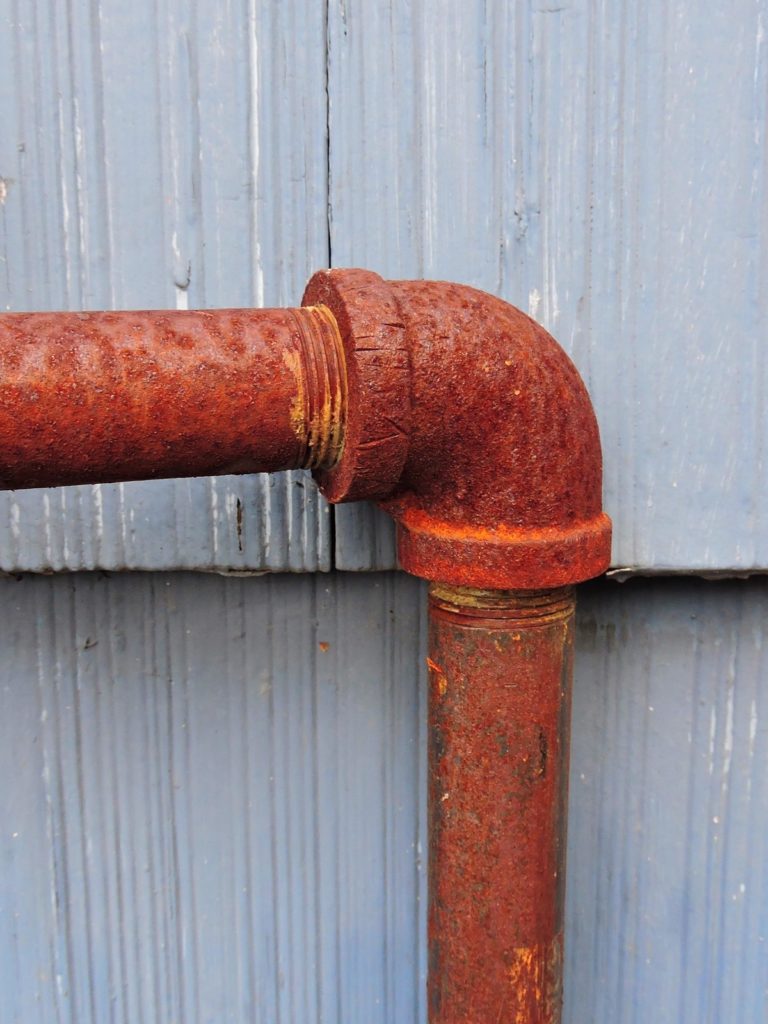
Finally, there’s the issue of rust. Rust can affect your toilet tank in a couple of different ways. If you already have rust in your pipes, the tank will let you know. Most tanks aren’t glazed, allowing rust-stained water to seep into the porcelain.
This leads to some serious discoloration in your fixture. It may even leech into the water supply, creating an ugly tint to your flushing water.
That’s not all. Hard water can cause components in the tank to rust up, too. Everything from the flapper valve to the chain connecting the flushing lever is at risk for damage. The corrosive nature of rust will slowly damage your toilet. It causes leaks, poor performance, and several other problems.
How CLR Can Help
CLR, also known as Calcium, Lime, and Rust Remover, is a fantastic product that can tackle a wide range of issues in your toilet tank. It’s a powerful cleaner that every homeowner should have in their arsenal. What makes it so special?
Well, CLR is an acid-based product that dissolves hardened rust and calcium buildup. There are several different acids in the formula. These include:
- Gluconic acid
- Citric acid
- Lactic acid
- Glycolic acid
- Sulfamic acid
CLR has some other ingredients as well. Ingredients like water and surfactants make the product safe and effective.
The gluconic, glycolic, and sulfamic acids are the key players here. Gluconic acid dissolves mineral buildup caused by hard water. Meanwhile, glycolic acid penetrates the porcelain to remove stains. Finally, the sulfamic acid removes rust from the metal in your tank.
Can CLR Be Used in Toilet Tank?
We’re happy to say that CLR is completely safe to use. In fact, many plumbers and home experts recommend it!
The product is stronger than your average cleaner and targets common toilet issues.
How to Clean Your Toilet Tank with CLR
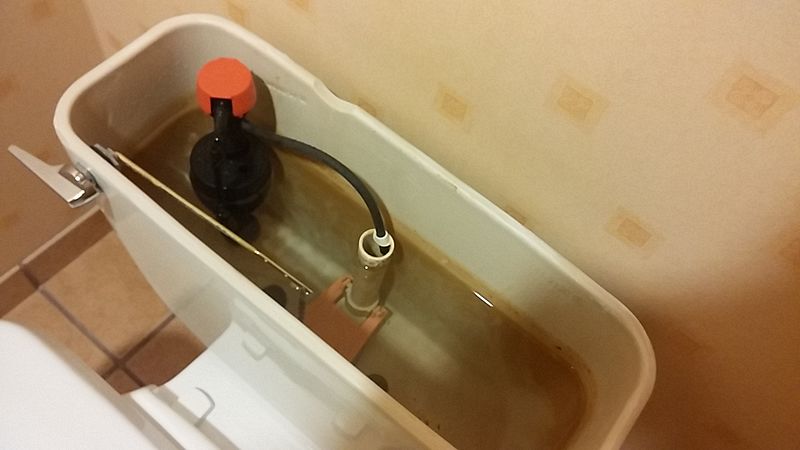
Using CLR in your toilet tank is a breeze! It’s an effective product that can keep your tank in good shape without all of the heavy scrubbing.
To clean your tank, you’re going to need:
- Protective rubber gloves
- Lightly abrasive scrub brush
- Sponge or rag
- Face mask and eye protection
You’ll also need some CLR to get the job done! Here’s a large bottle of CLR that you can use with many fixtures around your house. If you want something a bit easier to manage, you can also get this spray bottle of CLR.
Step 1: Turn Off Water Supply
The first thing you’ll need to do is turn off the water supply to your toilet. To take full advantage of the power of CLR, you’ll need to clean the tank when it’s empty.
Locate the supply line. It’s usually next to the toilet on the wall. Give it a turn to the right until it’s fully closed. Then, flush the toilet to remove water from the tank. You may have to do this a couple of times to get everything out.
Remove the tank lid to see inside. If you were successful, the tank should not fill up with water again. Check out this video if you’re having a hard time locating your supply line.
Step 2: Remove Surface Grime
Next, it’s time to remove any grime that’s accumulated on the sides and bottom of the tank. Think of this as a preliminary cleaning before you apply the CLR. You want the CLR to penetrate. Removing any surface sludge can improve efficiency.
Using a scrubbing brush and your sponge, give the inside of the tank a good wipe down!
Step 3: Apply CLR
Now it’s time to apply the CLR cleaner! This product does have a strong smell. Use a mask and some eye protection to stay safe.
Spray the CLR along the sides and bottom of the tank. Apply a liberal coat and wait for about two minutes.
Don’t forget to apply some CLR to any rusted metal components in the tank, too.
Step 4: Scrub the Tank
Depending on how bad your toilet tank is, you might have to do some scrubbing. After waiting two minutes, use your brush and sponge to scrub the tank.
Be gentle around the flushing components. Use your sponge to remove any rust and limescale that could affect the performance of your toilet.
Step 5: Turn Your Water Supply On and Rinse
CLR doesn’t need long to work its magic. After 2 minutes, the tank will be ready for rinsing. Turn the toilet’s water supply back on and let it fill. If you cleaned above the waterline, use a spray bottle with clean water to remove any excess CLR cleaner.
Once the tank has filled, just flush the toilet! The CLR will wash away and you should have a clean tank!
Using CLR for Toilet Tank Maintenance
As we mentioned earlier, your toilet tank needs a good cleaning at least twice a year.
To minimize issues with hard water and rusting, you can use CLR more frequently. But, you don’t have to do deep cleaning!
You can dilute CLR with water. A 50/50 mix is all you need. Fill the tank with this diluted mixture and let it soak before flushing. Doing this in between cleanings will keep your toilet tank in good condition!
Conclusion
CLR is a great cleaning product for toilets. It can get rid of mineral buildup, rusting, and other water issues with ease. The acids in CLR quickly dissolve hard water stains to keep your tank in good shape.
Check out the industrial-strength CLR spray or enhanced-formula CLR solution. Both work great with the toilet! If you have any questions about cleaning your toilet tank, leave them in the comments below!
If rust or limescale have taken over your toilet tank, use CLR to restore its finish and improve efficiency!

